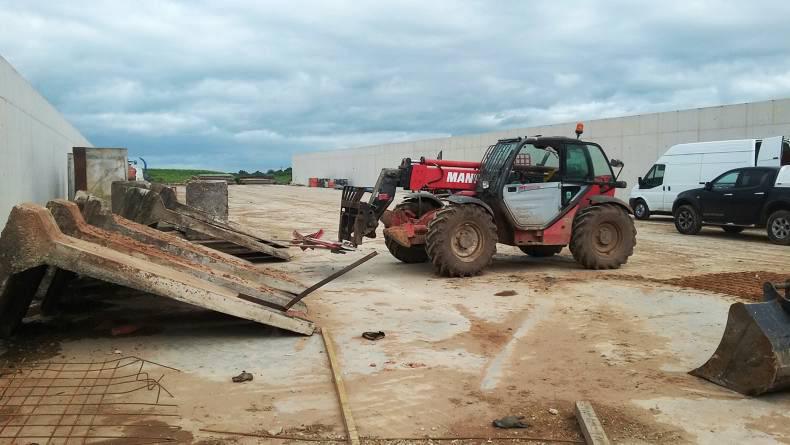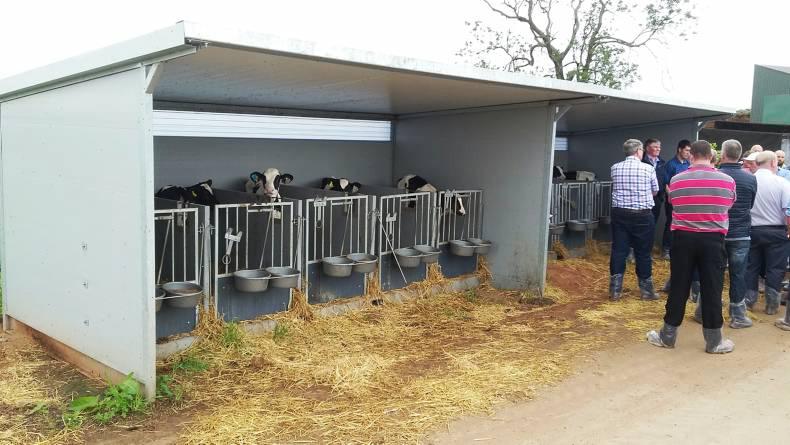At the beginning of this month, I participated on a trip to dairy farms in England and Wales organised by Genus.
To say that the farms we visited were impressive both in terms of scale and attention to detail would be an understatement. The first visit was to the Genus bull stud in Wales, where we got a rundown on the breeding programme, followed by a tour of the stud facilities.
That day we also visited Woodhey Holsteins in Cheshire. Originally 320ac, this farm was purchased 18 years ago, and now the owners are milking 600 cows on 1,000 acres of owned land.
Production was 10,600 litres per cow with a feed rate of 0.33kg/l. Milk on this farm was sold on a Tesco contract, with 70% of the volume receiving 28p and the rest paid at a manufacturing price (around 18p).
On day two, the first farm visited was probably the highlight of the trip. Andrew Evans was milking 2,000 cows averaging 11,000 litres on 1,900 acres in Shropshire. The facts and figures on this farm were staggering; 950 acres of maize grown, 60,000 litres of milk produced per day, all cows bedded on sand and 21 million litres of milk produced annually.
The milk on this farm was sold to Müller. Milk price was 24p/l with a breakeven price of 23p/l. The cows were medium-sized animals, with good feet and legs with excellent locomotion. All sheds had solid floors which were scraped into channels at milking (three times per day).
On a farm of this size, I was sure there would be a few lame cows, but I certainly did not see any. It was a testament to a very high standard of management. When we were there the builders were just finishing a new silo to hold this year’s maize crop. The silo measured 100m x 30m and covered 1.25 acres, at a cost of £200,000.
When questioned about his plans for the future, Andrew said that after expanding steadily over the past number of years he would like to slow down and focus on improving management of staff and cows. Water availability also seemed to be an issue. As well as the mains supply, the farm has three bore-holes and all rainwater is harvested.
Access to land has also become a problem, with prices in the area around £10,500/ac, rented ground ranging from £100/ac to £150/ac, and if you had to compete with potato growers or anaerobic digesters the price was closer to £250/ acre.
Robots
The next farm was something different for most of us, with 360 cows being milked through six robots and fed with a Lely robotic feeding system.
I went there as a sceptic, but after watching it in action it was hard not to be impressed. The cows seemed to be very content and the robots just got on with the work.
The farmer said that this system had allowed him to lose three full-time staff and instead of spending three to five hours a day feeding cattle, he now only spent eight hours a week on feeding.
That said, the robotic feeder broke down the week before we were there, and it took Lely until the next day to get it sorted (after flying in an engineer from Holland).
This farmer sold his milk through a broker on the spot market. His current price was 23p/l, but back in April his A price was 13p/l. As if that wasn’t bad enough, his April B price was only 4p/l.
During this time he had considered quitting, but instead he culled cows and cut production to make sure all his milk received the A price. He told us he is now expecting the price to rally over the coming months.
Invested
Reflecting on the trip, one thing that struck me was that all the farms visited had invested in good staff.
In terms of costs, breakeven milk price seemed to be in the range of 21p/l to 24p/l.
When I asked farmers what the banks were like to deal with, I was told that good managers with a proven track record and open / clear lines of communication were getting the support they needed. It is probably much the same here.
Most farms had come through a period of low prices (some much worse than NI) but all were in recovery mode and expecting prices to rise steadily over the coming months. This is a point our local processors need to take note of.






 This is a subscriber-only article
This is a subscriber-only article












SHARING OPTIONS: